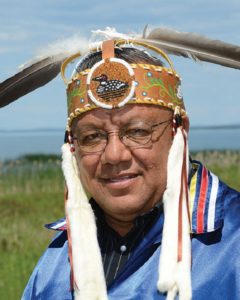Governance Update: December 2016

“With our member First Nation communities getting ready for a vote on the Education Agreement late this fall, we will have the opportunity to pass our own laws in the areas of education that will help our schools and give our kids the supports they need to do better in school. With the Anishinabek Nation Governance Agreement nearing completion, we will also have the opportunity to govern our communities in more traditional ways that reflect who we are as Anishinaabe people and pass governance- related laws that will help improve conditions in our communities.” -Deputy Grand Council Chief Glen Hare, October 2016
Under the Anishinabek Nation Governance Agreement, our communities will have the power to pass our own governance related-laws, including our own election laws. Laws that help us to ensure our languages survive and that we preserve our unique culture. Laws that set out the rights and responsibilities associated with being a citizen of a member First Nation community and laws that set out how our monies will be managed.
However, more work needs to take place to get us ready for self-government and ready for a ratification vote on an Anishinabek Nation Governance Agreement. On the communications front, we must build on what practices worked best during the ratification of the Anishinabek Nation Education Agreement; what were the best ways to reach out to our people, both on and off-reserve? Was it distributing information door-to-door in some communities? Posting information on First Nation and the Anishinabek Nation websites? It is always a challenge to get citizens to come out to community meetings and with more and more of our younger citizens using social media, it is sometimes difficult to reach out to so many First Nations right across Ontario and further in some cases.
Through our Governance Working Group (which is made up of representatives from our member communities that provide input on the Governance negotiations) we will need to start thinking about the various law-making processes that are set out in either our First Nation constitutions or in other customary processes traditionally used. We need to gather feedback and input from our citizens on the kinds of laws that will be passed under the new proposed self-government arrangements and how they might be impacted by the new laws.
In some cases, this might be new for us. In the past we may have focused on passing Band Council Resolutions whereas under our new self-government arrangements, the focus will be on looking at the processes used by our communities to develop laws and how we will ensure that our people will have the opportunity to share their views about the new proposed laws before the laws are passed. There is also the analysis of the new proposed fiscal arrangements between the Anishinabek Nation and Canada and funding agreements between our First Nations and the Anishinabek Nation, especially in light of Canada’s policy shift that lifted the 2% cap on program funding that existed since 1996.
Finally, the work continues on finalizing the Anishinabek Nation Governance Agreement. The last remaining piece to be completed is the fiscal chapter which sets out the fiscal principles of the new government-to-government relationship and the fundamental elements of a new fiscal transfer agreement.


